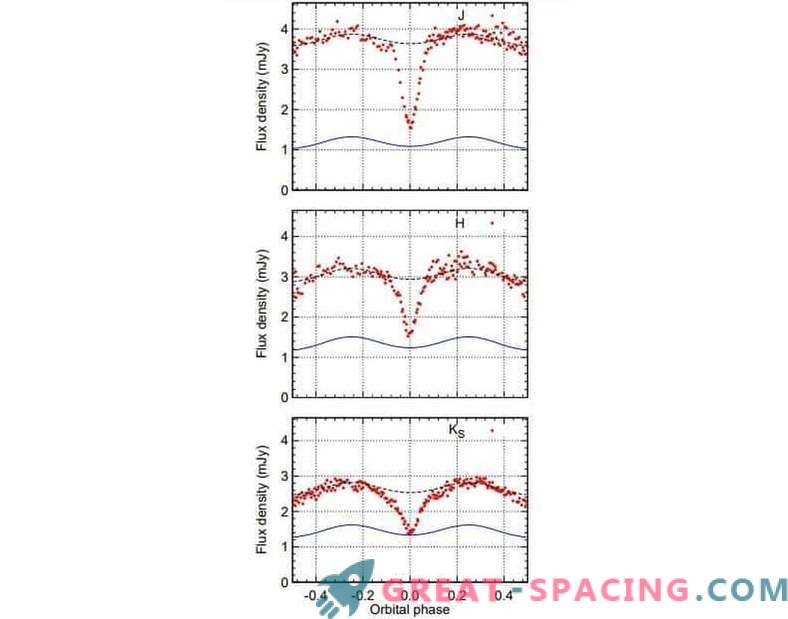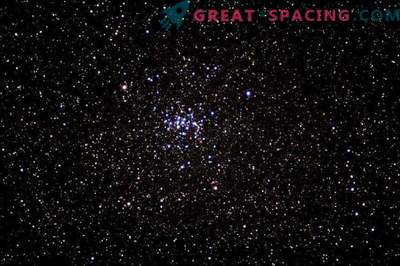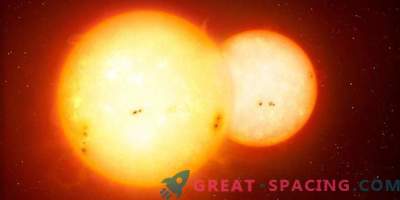
Brazilian scientists conducted photometric observations of a dwarf new V2051 Ophiuchus during the rest period. This allowed to obtain important information about the nature of the object.
The star was first noticed in 1972. This is an ultrashort eclipse dwarf new, whose orbital period lasts 90 minutes. 300 light-years distant from us. We have before us an interacting binary system, where a developed late-type star transfers matter to a white dwarf through an accretion disk.
The white dwarf in the radius reaches 1% of the solar and is 22% less massive. Satellite - 0.16 solar radius and 0.15 mass. Despite knowledge of the main parameters, there is no exact understanding of what leads to repeated bursts. Usually such events in new ones are caused by a sudden increase in the rate of mass transfer or due to the thermal instability of the disk.

Phase orbital data of light curves of V2051 Ophiuchus (points), model contribution of a donor star (solid curve), and an ellipsoidal curve with a constant disk flow (dashed curve) Therefore, scientists have decided to consider the star in more detail. A new survey was conducted with an OSIRIS infrared imager and a spectrograph mounted on a 4.1-meter SOAR telescope (Chile). The photometry obtained allowed us to obtain more detailed information and hints on the responsible mechanism.
After creating an ellipsoidal modulation model caused by a distorted donor star, it was possible to use the streams to demonstrate the magnitude and light. The analysis showed that the donor star is a lower object of the main sequence with spectral type M8. Temperature index - 2700 K.
The data obtained indicate that surges occur due to a sudden increase in the rate of mass transfer. The remaining options are not suitable for the model of a dwarf star.











































